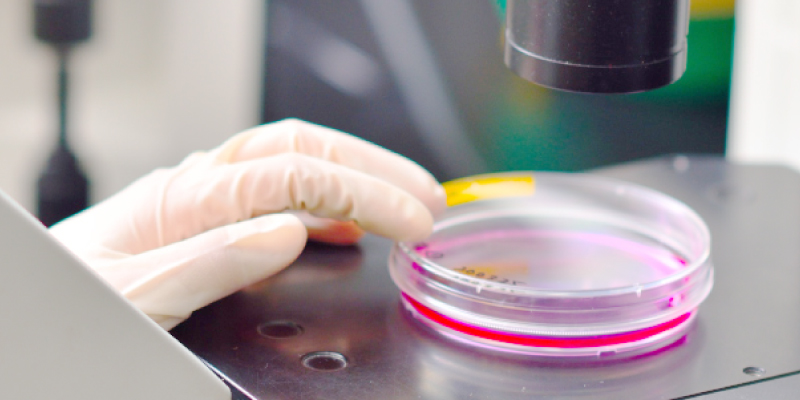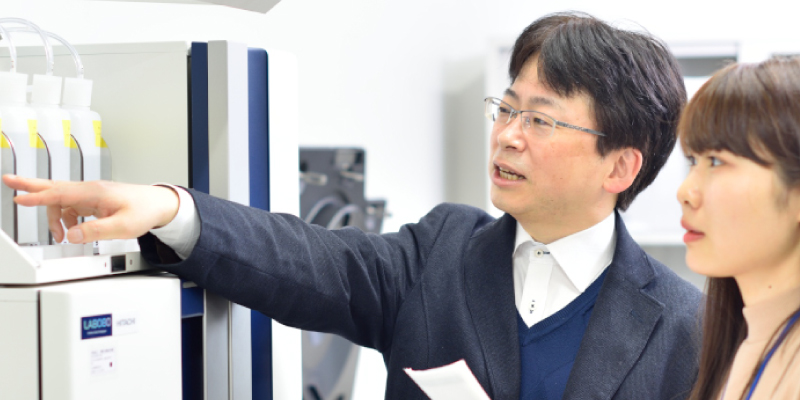
客員教授
木下 哲(きのした・てつ)
Tetsu Kinoshita
専門分野/エピジェネティクス、植物生殖遺伝学
職位:客員教授
学位:博士(理学)(総合研究大学院大学)
- 総合研究大学院大学生命科学研究科分子生物機構論専攻博士後期課程修了
- 基礎生物学研究所、カリフォルニア大学バークレー校、国立遺伝学研究所、奈良先端大バイオサイエンス研究科を経て本学へ
研究テーマ
当研究室では、主に「ゲノムのせめぎ合い」や「エピジェネティクス」に着目した研究を展開しています。例えば、自殖性の植物では、DNAの塩基配列はオスとメスとで同一であるはずですが、実際はオス由来とメス由来のゲノムの機能はそれぞれ異なっていることが知られています。このことは、特に受精後の胚発生を助ける胚乳組織において顕著であり、オス由来のゲノムは胚乳を大きくし、メス由来のゲノムは胚乳を小さくするといった、相反する機能を持つことが古くから知られています。我々は、これまでに、胚乳組織においてオス・メスの由来に応じて、片親性の遺伝子発現が決定されるゲノムインプリンティングを明らかにしてきおり、今後もDNAの塩基配列情報のみでは説明できない様々な生命現象を明らかしていこうと考えています。
(1) ゲノムインプリンティングの制御機構の解明
これまでの研究により、シロイヌナズナのFWA遺伝子は胚乳において母親アレル特異的に発現するインプリント遺伝子であることが明らかになっています。母親アレルの活性化には雌性配偶体で発現しているDNA脱メチル化酵素遺伝子の働きが必要で、父親アレルのサイレンシングには維持型DNAメチル化酵素遺伝子の働きが必須です。私たちはFWA遺伝子の発現を指標にインプリンティングの制御に関与する突然変異体を選抜して解析しています。雌性配偶体でおこるFWAの不活性な状態から活性な状態へのエピジェネティックなリプログラミング機構を明らかにすることを目指しています。
(2) 種間雑種における胚乳崩壊の分子メカニズム
イネやシロイヌナズナを含む多くの植物では、種間の掛け合わせを行うと、胚乳発生が原因で生殖隔離がおこることが知られています。このような胚乳発生異常は種の組み合わせ、交雑の方向性、倍数性によって決まることから、ある決まったメカニズムが存在すると考えられます。私たちは、現在理解されている胚乳発生の分子メカニズムやゲノムインプリンティングの機構から、種間雑種における胚乳崩壊の分子メカニズムを明らかにしようとしています。また、このようなオス由来とメス由来のゲノムの機能の違いは、哺乳動物においても知られており、両者の比較からゲノムインプリンティングの役割に迫りたいと考えています。

| 研究の応用領域 | 産官学連携で求めるパートナー |
|---|---|
|
植物育種、種子バイオマス、植物工場、DNAメチル化制御 |
様々な分野の基礎研究者 |
Topics of research
During sexual reproduction, maternal and paternal chromosomes do not contribute equally to their offspring, even if they have identical nucleotide sequences, because the expression of certain genes is parent-of-origin-specific. This phenomenon, called genomic imprinting, is controlled by differential patterns of DNA methylation on the parental genes. In plants, genomic imprinting controls endosperm development and is also related to the reproductive barrier observed in hybrid endosperm. We study these epigenetic mechanisms in Arabidopsis and rice.
<Mechanism of genomic imprinting in Arabidopsis thaliana>
Genomic imprinting is an epigenetic phenomenon resulting from unequal expression of maternally and paternally inherited alleles of a gene. We have been studying the mechanism of genomic imprinting of FWA in A. thaliana. Expression of FWA is controlled by methylation of tandem repeats in the 5' region of the gene. Activation of the maternal allele requires cytosine demethylation of thease repeats in the central cell within the female gametophyte. To further clarify how the silent state of FWA is converted to active state, we have screened and analyzed mutants that are defective in activation of a FWA-GFP reporter in the central cell.
<Reproductive barrier of rice endosperm>
Endosperm breakdown is a well-known phenomenon in interspecific or interploidy cross of many plant species, including rice. Because overgrowth or undergrowth of the endosperm is determined by combination of the species, ploidy level and direction of the cross, genetic mechanisms are predicted to control this phenomenon. We are studying the mechanism of this reproductive barrier in rice endosperm, in relation to genomic imprinting.
主な業績論文等
- Ikeda Y., Kinoshita Y., Susaki D., Ikeda Y., Iwano M., Takayama S., Higashiyama T., Kakutani T., Kinoshita T. HMG domain containing SSRP1 is required for DNA demethylation and genomic imprinting in Arabidopsis. Developmental Cell 21(3): 589-96. (2011)
- Ohnishi T., Yoshino M, Yamakawa H, Kinoshita T. The biotron breeding system: a rapid and reliable procedure for genetic studies and breeding in rice. Plant Cell Physiol. 52: 1249-57. (2011)
- Ishikawa R., Ohnishi T., Kinoshita Y., Eiguchi M., Kurata N., Kinoshita T. Rice interspecies hybrids show precocious or delayed developmental transitions in the endosperm without change to the rate of syncytial nuclear division. Plant J. 65:798-806. (2011)
- Kinoshita T., Ikeda Y., Ishikawa R. Genomic imprinting: A balance between antagonistic roles of parental chromosomes. Seminars in Cell and Developmental Biology 19: 574-579. (2008)
- Kinoshita T., Miura A., Choi Y., Kinoshita Y., Cao X., Jacobsen SE, Fischer RL, Kakutani T. One-way control of FWA imprinting in Arabidopsis endosperm by DNA methylation. Science 303:521-523. (2004)






